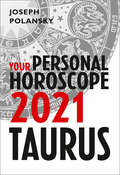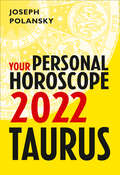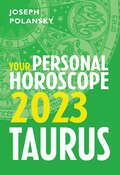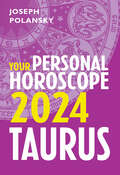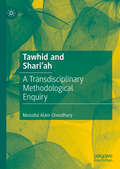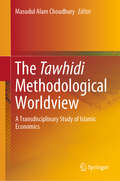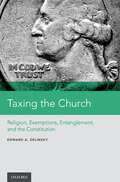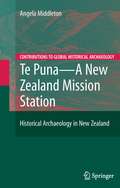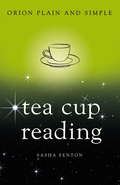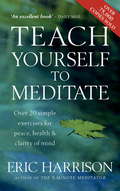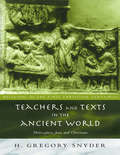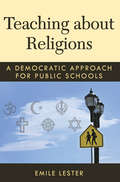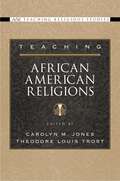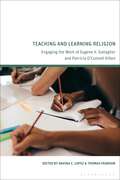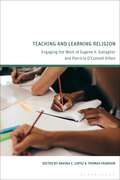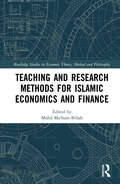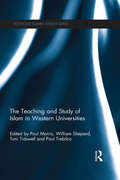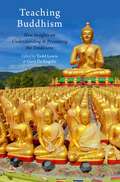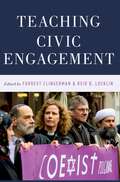- Table View
- List View
Taurus 2021: Your Personal Horoscope
by Joseph PolanskyYour guide to the year 2021. This fantastic book includes month-by-month forecasts and all you need to know to find out what is in store for you in the year ahead. The only horoscope you’ll ever need.
Taurus 2022: Your Personal Horoscope
by Joseph PolanskyYour guide to the year 2022. This fantastic book includes month-by-month forecasts and all you need to know to find out what is in store for you in the year ahead. The only horoscope you’ll ever need.
Taurus 2023: Your Personal Horoscope
by Joseph PolanskyYour complete one-volume guide to the year 2023. This fantastic and in-depth book includes month-by-month forecasts for every sign and all you need to know to find out what is in store for you in the year ahead. The only one-volume horoscope you’ll ever need.
Taurus 2024: Your Personal Horoscope
by Joseph PolanskyYour complete one-volume guide to the year 2024. This fantastic and in-depth book includes month-by-month forecasts for every sign and all you need to know to find out what is in store for you in the year ahead. The only one-volume horoscope you’ll ever need.
Tawhid and Shari'ah: A Transdisciplinary Methodological Enquiry
by Masudul Alam ChoudhuryThis book invokes the Tawhidi ontological foundation of the Qur’anic law and worldview, and is also a study of ta’wil, the esoteric meaning of Qur’anic verses. It presents a comparative analysis between the Tawhidi methodology and the contemporary subject of Shari’ah. Masudul Alam Choudhury brings about a serious criticism of the traditional understanding of Shari’ah as Islamic law contrary to the holistic socio-scientific worldview of the unity of knowledge arising from Tawhid as the law. A bold repudiation of the Islamic traditional understanding and the school of theocracy, Choudhury’s critique is in full consonance with the Qur’an and Sunnah. It is critical of the sectarian (madhab) conception of relational independence of facts. Thus the non-creative outlook of Shari’ah contrasts with universality and uniqueness of Tawhid as the analytically established law explaining the monotheistic organic unity of being and becoming in ‘everything’. This wide and strict methodological development of the Tawhidi worldview is articulated in this work. The only way that Tawhid and Shari'ah can converge as law is in terms of developing the Tawhidi methodology, purpose and objective of the universal and unique law in consonance with the ontology of Tawhid. Such a convergence in the primal ontological sense of Tawhid is termed as maqasid as-shari'ah al-Tawhid.
The Tawhidi Methodological Worldview: A Transdisciplinary Study of Islamic Economics
by Masudul Alam ChoudhuryThis book develops and applies the methodology of Tawhid (“monotheism”) as law and the Sunnah (the teachings of Prophet Muhammad) in the Qur’an in establishing a transdisciplinary foundation for the study of Islamic economics, finance, society, and science. It employs the Tawhidi String Relation (TSR), a new theoretical framework in contemporary Islamic sciences, in the methodological formalisation and application of the Tawhidi worldview - as the primal ontological law of monotheism. It employs a deeply Qur’anic exegesis, and a mathematical, philosophical, and socio-scientific mode of inquiry in deriving, developing, and empirically applying the Qur’anic methodology of “unity of knowledge”. It is the first book of its kind in rigorously studying the true foundation of the Qur’anic concept of ‘everything’ - as the world-system extending between the heavens and Earth. The qur’anic terminology of the precept of this “world-system” in its most comprehensive perspective is A’lameen, the terminology in the Qur’an that accounts for the generality and details of the world-systems that are governed by the method of evaluation of the objective criterion of wellbeing. Wellbeing objective criterion is evaluated subject to inter-causal relations between systemic entities, variables, and functions. The cardinal principle of Tawhid in its relationship with the world-system conveys the corporeal meaning of monotheism in its cognitive implication of abstraction and application. Such a study has not been undertaken in existing Islamic socio-scientific literature in analysing Islamic economics, finance, science, and society collectively, using Tawhidi law as a theoretical framework. This book will be relevant to all such scholars who are interested in studying the monotheistic law and the Islamic principles, particularly Tawhid, Shari’ah, and Islamic philosophical thought.
Taxing the Church: Religion, Exemptions, Entanglement, and the Constitution
by Edward A. ZelinskyThis book explores the taxation and exemption of churches and other religious institutions, both empirically and normatively. This exploration reveals that churches and other religious institutions are treated diversely by the federal and state tax systems. Sectarian institutions pay more tax than many believe. In important respects, the states differ among themselves in their respective approaches to the taxation of sectarian entities. Either taxing or exempting churches and other sectarian entities entangles church and state. The taxes to which churches are more frequently subject - federal Social Security and Medicare taxes, sales taxes, real estate conveyance taxes - fall on the less entangling end of the spectrum. The taxes from which religious institutions are exempt - general income taxes, value-based property taxes, unemployment taxes - are typically taxes with the greatest potential for church-state enforcement entanglement. It is unpersuasive to reflexively denounce the tax exemption of religious actors and institutions as a subsidy. Tax exemption can implement the secular, non-subsidizing goal of minimizing church-state enforcement entanglement and thus be regarded as part of a normative tax base. Taxing the church or exempting the church involves often difficult trade-offs among competing and legitimate values. On balance, our federal system of decentralized legislation reasonably make these legal and tax policy trade-offs, though there is room for improvement in particular settings such as the protection of internal church communications and the expansion of the churches' sales tax liabilities.
Taxing the Church: Religion, Exemptions, Entanglement, and the Constitution
by Edward A. ZelinskyThis book explores the taxation and exemption of churches and other religious institutions, both empirically and normatively. This exploration reveals that churches and other religious institutions are treated diversely by the federal and state tax systems. Sectarian institutions pay more tax than many believe. In important respects, the states differ among themselves in their respective approaches to the taxation of sectarian entities. Either taxing or exempting churches and other sectarian entities entangles church and state. The taxes to which churches are more frequently subject - federal Social Security and Medicare taxes, sales taxes, real estate conveyance taxes - fall on the less entangling end of the spectrum. The taxes from which religious institutions are exempt - general income taxes, value-based property taxes, unemployment taxes - are typically taxes with the greatest potential for church-state enforcement entanglement. It is unpersuasive to reflexively denounce the tax exemption of religious actors and institutions as a subsidy. Tax exemption can implement the secular, non-subsidizing goal of minimizing church-state enforcement entanglement and thus be regarded as part of a normative tax base. Taxing the church or exempting the church involves often difficult trade-offs among competing and legitimate values. On balance, our federal system of decentralized legislation reasonably make these legal and tax policy trade-offs, though there is room for improvement in particular settings such as the protection of internal church communications and the expansion of the churches' sales tax liabilities.
Te Puna - A New Zealand Mission Station: Historical Archaeology in New Zealand (Contributions To Global Historical Archaeology)
by Angela MiddletonEvangelical missionary societies have been associated with the processes of colonisation throughout the globe, from India to Africa and into the Pacific. In late 18th-century Britain, the Church Missionary Society for Africa and the East (CMS) began its missionary ventures, and in the first decade of the 19th-century, sent three of its members to New South Wales, Australia, and then on to New Zealand, an unknown, little-explored part of the world. Across the globe, a common material culture travelled with its evangelizing (and later colonizing) settlers, with artefacts appearing as cultural markers from Cape Town in South Africa, to Tasmania in Australia and the even more remote Bay of Islands in New Zealand. After missionization, colonization occurred. Additionally, common themes of interaction with indigenous peoples, household economy, the development of commerce, and social and gender relations also played out in these communities. This work is unique in that it provides the first archaeological examination of a New Zealand mission station, and as such, makes an important contribution to New Zealand historical archaeology and history. It also situates the case study in a global context, making a significant contribution to the international field of mission archaeology. It informs a wider audience about the processes of colonization and culture contact in New Zealand, along with the details of the material culture of the country’s first European settlers, providing a point of comparison with other outposts of British colonization.
Tea Cup Reading, Orion Plain and Simple (Plain and Simple)
by VariousA practical guide on the revealing art of tea cup reading.The art of reading tea leaves has been practised for centuries by everyone from Buddhist monks to Bedouins to Gypsies. Once very popular in Britain and Ireland and all the countries they settled, the practice has all but faded away. Now, this concise book provides quick, easy, and fun instructions for practising tasseography today. The book includes everything needed to become an accomplished practitioner:* a brief history of tea and coffee* advice on brewing and serving* basic rules of tea leaf and cup reading* handy tips for instant readings* an illustrated dictionary of 361 symbols with precise definitionsTea Cup Reading is an essential reference for this fascinating interpretive art.
Teach Yourself To Meditate: Over 20 simple exercises for peace, health & clarity of mind
by Eric HarrisonA clear and practical guide to learning meditation techniquesMany people are turning to meditation as an effective way to relax and find inner peace. Regular meditation can help you to combat stress, improve your general health, increase your awareness and boost your capacity to think clearly and creatively. Teach Yourself to Meditate is the ideal guide for everyone who wants to learn this powerful technique. This excellent book explains what meditation is, why it works and how to do it, as well as the 10 core meditation practices which work best for everyone. Throughout the book there are also easy-to-follow exercises and enjoyable 'spot meditations' which you can do any time, anywhere. By investing just a few minutes a day, you will learn a skill that will greatly improve the quality of your life.
Teachers and Texts in the Ancient World: Philosophers, Jews and Christians (Religion in the First Christian Centuries)
by H. Greg SnyderTeachers and Texts in the Ancient World presents a comprehensive and accessible survey of religious and philosophical teaching and classroom practices in the ancient world. H. Gregory Snyder synthesizes a wide range of ancient evidence and modern scholarship to address such questions as how the literary practices of Jews and Christians compared to the literary practices of the philosophical schools and whether Christians were particularly noteworthy for their attatchment to scripture. Teachers and Texts in the Ancient World will be of interest to students of classics, ancient history, the early Christian world and Jewish studies.
Teachers and Texts in the Ancient World: Philosophers, Jews and Christians (Religion in the First Christian Centuries)
by H. Greg SnyderTeachers and Texts in the Ancient World presents a comprehensive and accessible survey of religious and philosophical teaching and classroom practices in the ancient world. H. Gregory Snyder synthesizes a wide range of ancient evidence and modern scholarship to address such questions as how the literary practices of Jews and Christians compared to the literary practices of the philosophical schools and whether Christians were particularly noteworthy for their attatchment to scripture. Teachers and Texts in the Ancient World will be of interest to students of classics, ancient history, the early Christian world and Jewish studies.
Teaching about Religions: A Democratic Approach for Public Schools
by Emile Lester"This provocative and timely book challenges Americans to rethink what it means to take democracy and religious freedom seriously in public education. Emile Lester takes the reader beyond culture war conflicts rooted in religious divisions and offers bold, new solutions for addressing our differences with fairness and robust toleration. Instead of battlegrounds, he argues, public schools can and should be places that include all voices in ways that prepare citizens to engage one another with civility and respect. Teaching about Religions is essential reading for all who care about the future of public schools---and the health of American democracy." --- Charles C. Haynes, Senior Scholar, Freedom Forum First Amendment Center "More than simply a synthesis of existing scholarship, [this book is] an original contribution to the field. [The] major themes are timely, and this book might well contribute to public discussion of important issues in our culture wars." ---Warren Nord, University of North Carolina–Chapel Hill "Arriving in the wake of a bitter battle over the place of Islam in America and in the midst of calls for greater understanding and civility, Emile Lester's new book is a timely contribution to the debate about the best ways to teach about religion in our nation's public schools. A pioneering researcher in this field, Lester offers thoughtful critiques of existing proposals as well as fresh ideas. His recommendations reflect painstaking efforts to understand the concerns of groups (most notably, conservative Christians) to which he does not belong, and a firm grasp of the difference between fostering understanding of other faiths and pressing for acceptance of them. Lester's prescriptions, always informed and fair-minded and sometimes provocative, should drive the debate forward in productive ways." ---Melissa Rogers, Director, Center for Religion and Public Affairs at Wake Forest University School of Divinity and Nonresident Senior Fellow, The Brookings Institution Frequent news stories about the debates waged between secularists and religious conservatives have convinced most Americans that public schools must choose between promoting respect for religious minorities and respecting the interests of conservative Christians. As a result, public schools fail to teach students about the meaning and value of protecting religious liberty and consequently perpetuate mistrust across the cultural divide, further empower extremists, and obscure the fact that most Americans of all religious backgrounds share a commitment to basic democratic principles. In response, the public schools in the religiously diverse and divided community of Modesto, California, have introduced a widely acclaimed required world religions course. Drawing on groundbreaking research on the creation of and response to the Modesto course as well as on political philosophy, Emile Lester advocates a civic approach to teaching about religion in public schools that at once emphasizes respect for all views about religion and provides a special recognition of conservative Christian beliefs.
Teaching African American Religions (AAR Teaching Religious Studies)
by Carolyn M. Jones Theodore Louis TrostThe variety and complexity of its traditions make African American religion one of the most difficult topics in religious studies to teach to undergraduates. The sheer scope of the material to be covered is daunting to instructors, many of whom are not experts in African American religious traditions, but are called upon to include material on African American religion in courses on American Religious History or the History of Christianity. Also, the unfamiliarity of the subject matter to the vast majority of students makes it difficult to achieve any depth in the brief time allotted in the survey courses where it is usually first encountered. The essays in this volume will supply functional, innovative ways to teach African American religious traditions in a variety of settings.
Teaching and Learning Religion: Engaging the Work of Eugene V. Gallagher and Patricia O’Connell Killen
by Davina C. Lopez and Thomas PearsonEugene V. Gallagher and Patricia O'Connell have influenced a generation of religious studies professors through their leadership in Wabash Center teaching workshops. In this book, contributors pay tribute to their influence and build on their insights in short essays focused on three perennial themes: Place, Plan, and Persona.Firstly, the book considers how negotiating your institutional context is essential to effective teaching. Reflections include essays on places of learning, the interaction between person and place, and the online teaching environment. Secondly, the contributors explore how effective teaching requires intentional self-critical design of students' intellectual experience, from the arc of the course, to the scope and purpose of the curriculum. Topics include planning for playfulness, teaching 'strangeness', and strengthening student engagement. In the final section on persona, topics include humour in the classroom, authenticity in the teaching profession, team teaching, and ungrading.This book contributes to the scholarship of teaching and learning in religious studies and higher education by engaging Gallagher and Killen's insights, and by exploring a range of perspectives on core and enduring pedagogical concepts and questions.
Teaching and Learning Religion: Engaging the Work of Eugene V. Gallagher and Patricia O’Connell Killen
Eugene V. Gallagher and Patricia O'Connell have influenced a generation of religious studies professors through their leadership in Wabash Center teaching workshops. In this book, contributors pay tribute to their influence and build on their insights in short essays focused on three perennial themes: Place, Plan, and Persona.Firstly, the book considers how negotiating your institutional context is essential to effective teaching. Reflections include essays on places of learning, the interaction between person and place, and the online teaching environment. Secondly, the contributors explore how effective teaching requires intentional self-critical design of students' intellectual experience, from the arc of the course, to the scope and purpose of the curriculum. Topics include planning for playfulness, teaching 'strangeness', and strengthening student engagement. In the final section on persona, topics include humour in the classroom, authenticity in the teaching profession, team teaching, and ungrading.This book contributes to the scholarship of teaching and learning in religious studies and higher education by engaging Gallagher and Killen's insights, and by exploring a range of perspectives on core and enduring pedagogical concepts and questions.
Teaching and Research Methods for Islamic Economics and Finance (Routledge Studies in Economic Theory, Method and Philosophy)
by Mohd Ma'Sum BillahMethods and techniques adopted in teaching, training, learning, research, professional development, or capacity building are generally standardized across most traditional disciplines, particularly within developing countries. This is not the case, however, when it comes to the Islamic disciplines, and, in particular, in relation to the study of Islamic economics and finance, which is influenced by conventional standards and techniques. This is primarily due to the lack of availability of the requisite standards and mechanisms designed within the spirit of Maqsid al-Shari’ah. This book offers a unique resource and a comprehensive overview of the contemporary methods and smart techniques available for teaching, learning, and researching Islamic eco-finance, and it presents solutions to the challenges in implementing them. Further, the book gives deep insight into the most appropriate methodologies that could be employed empirically to explore, model, analyze, and evaluate Islamic finance theories and models, respectively. It also gives recommendations for improving learning, teaching, and research outcomes in Islamic eco-finance. The book also addresses how, in this advanced technological era, smart tools like artificial intelligence, machine learning, big data, Zoom, and the internet of things can be adapted to help equip students, researchers, and scholars with smart skills. The book will enable those studying Islamic economics and finance to grasp the appropriate tools for research and learning. Additionally, the Islamic economics and finance sector is growing at a significant rate and therefore requires the upskilling and capacity building of its human resources; thus, the book will also be highly beneficial for practitioners involved in the industry.
Teaching and Research Methods for Islamic Economics and Finance (Routledge Studies in Economic Theory, Method and Philosophy)
by Mohd Ma’Sum BillahMethods and techniques adopted in teaching, training, learning, research, professional development, or capacity building are generally standardized across most traditional disciplines, particularly within developing countries. This is not the case, however, when it comes to the Islamic disciplines, and, in particular, in relation to the study of Islamic economics and finance, which is influenced by conventional standards and techniques. This is primarily due to the lack of availability of the requisite standards and mechanisms designed within the spirit of Maqsid al-Shari’ah. This book offers a unique resource and a comprehensive overview of the contemporary methods and smart techniques available for teaching, learning, and researching Islamic eco-finance, and it presents solutions to the challenges in implementing them. Further, the book gives deep insight into the most appropriate methodologies that could be employed empirically to explore, model, analyze, and evaluate Islamic finance theories and models, respectively. It also gives recommendations for improving learning, teaching, and research outcomes in Islamic eco-finance. The book also addresses how, in this advanced technological era, smart tools like artificial intelligence, machine learning, big data, Zoom, and the internet of things can be adapted to help equip students, researchers, and scholars with smart skills. The book will enable those studying Islamic economics and finance to grasp the appropriate tools for research and learning. Additionally, the Islamic economics and finance sector is growing at a significant rate and therefore requires the upskilling and capacity building of its human resources; thus, the book will also be highly beneficial for practitioners involved in the industry.
The Teaching and Study of Islam in Western Universities (Routledge Islamic Studies Series)
by Paul Morris William Shepard Toni Tidswell Paul TrebilcoPublic interest in the religion of Islam and in Muslim communities in recent years has generated an impetus for Western Universities to establish an array of Institutes and programs dedicated to the study of Islam. Despite the growth in number of programs dedicated to this study, very little attention has been paid to the appropriate shape of such programs and the assumptions that ought to underlie such a study. The Teaching and Study of Islam in Western Universities attempts to address two central questions that arise through the teaching of Islam. Firstly, what relation is there between the study of the religion of Islam and the study of those cultures that have been shaped by that religion? Secondly, what is the appropriate public role of a scholar of Islam? After extensive discussion of these questions, the authors then continue to address the wider issues raised for the academic community having to negotiate between competing cultural and philosophical demands. This edited collection provides new perspectives on the study of Islam in Western Institutions and will be an invaluable resource for students of Education and Religion, in particular Islamic Studies.
The Teaching and Study of Islam in Western Universities (Routledge Islamic Studies Series)
by Paul Morris William Shepard Paul Trebilco Toni TidswellPublic interest in the religion of Islam and in Muslim communities in recent years has generated an impetus for Western Universities to establish an array of Institutes and programs dedicated to the study of Islam. Despite the growth in number of programs dedicated to this study, very little attention has been paid to the appropriate shape of such programs and the assumptions that ought to underlie such a study. The Teaching and Study of Islam in Western Universities attempts to address two central questions that arise through the teaching of Islam. Firstly, what relation is there between the study of the religion of Islam and the study of those cultures that have been shaped by that religion? Secondly, what is the appropriate public role of a scholar of Islam? After extensive discussion of these questions, the authors then continue to address the wider issues raised for the academic community having to negotiate between competing cultural and philosophical demands. This edited collection provides new perspectives on the study of Islam in Western Institutions and will be an invaluable resource for students of Education and Religion, in particular Islamic Studies.
Teaching Buddhism: New Insights on Understanding and Presenting the Traditions (AAR Teaching Religious Studies)
by Todd Lewis and Gary DeangelisBuddhist studies is a rapidly changing field of research, constantly transforming and adapting to new scholarship. This creates a problem for instructors, both in a university setting and in monastic schools, as they try to develop a curriculum based on a body of scholarship that continually shifts in focus and expands to new areas. Teaching Buddhism establishes a dialogue between the community of instructors of Buddhism and leading scholars in the field who are updating, revising, and correcting earlier understandings of Buddhist traditions. Each chapter presents new ideas within a particular theme of Buddhist studies and explores how courses can be enhanced with these insights. Contributors in the first section focus on the typical approaches, figures, and traditions in undergraduate courses, such as the role of philosophy in Buddhism, Nagarjuna, Yogacara Buddhism, tantric traditions, and Zen Buddhism. They describe the impact of recent developments-like new studies in the cognitive sciences-on scholarship in those areas. Part Two examines how political engagement and ritual practice have shaped the tradition throughout its history. Focus then shifts to the issues facing instructors of Buddhism-dilemmas for the scholar-practitioner in the academic and monastic classroom, the tradition's possible roles in teaching feminism and diversity, and how to present the tradition in the context of a world religions course. In the final section, contributors offer stories of their own experiences teaching, paying particular attention to the ways in which American culture has impacted them. They discuss the development of courses on American Buddhism; using course material on the family and children; the history and trajectory of a Buddhist-Christian dialog; and Buddhist bioethics, environmentalism, economic development, and social justice. In synthesizing this vast and varied body of research, the contributors in this volume have provided an invaluable service to the field
Teaching Buddhism: New Insights on Understanding and Presenting the Traditions (AAR Teaching Religious Studies)
Buddhist studies is a rapidly changing field of research, constantly transforming and adapting to new scholarship. This creates a problem for instructors, both in a university setting and in monastic schools, as they try to develop a curriculum based on a body of scholarship that continually shifts in focus and expands to new areas. Teaching Buddhism establishes a dialogue between the community of instructors of Buddhism and leading scholars in the field who are updating, revising, and correcting earlier understandings of Buddhist traditions. Each chapter presents new ideas within a particular theme of Buddhist studies and explores how courses can be enhanced with these insights. Contributors in the first section focus on the typical approaches, figures, and traditions in undergraduate courses, such as the role of philosophy in Buddhism, Nagarjuna, Yogacara Buddhism, tantric traditions, and Zen Buddhism. They describe the impact of recent developments-like new studies in the cognitive sciences-on scholarship in those areas. Part Two examines how political engagement and ritual practice have shaped the tradition throughout its history. Focus then shifts to the issues facing instructors of Buddhism-dilemmas for the scholar-practitioner in the academic and monastic classroom, the tradition's possible roles in teaching feminism and diversity, and how to present the tradition in the context of a world religions course. In the final section, contributors offer stories of their own experiences teaching, paying particular attention to the ways in which American culture has impacted them. They discuss the development of courses on American Buddhism; using course material on the family and children; the history and trajectory of a Buddhist-Christian dialog; and Buddhist bioethics, environmentalism, economic development, and social justice. In synthesizing this vast and varied body of research, the contributors in this volume have provided an invaluable service to the field
Teaching Civic Engagement (AAR Teaching Religious Studies)
by Forrest Clingerman & Reid B. LocklinUsing a new model focused on four core capacities-intellectual complexity, social location, empathetic accountability, and motivated action--Teaching Civic Engagement explores the significance of religious studies in fostering a vibrant, just, and democratic civic order. In the first section of the book, contributors detail this theoretical model and offer an initial application to the sources and methods that already define much teaching in the disciplines of religious studies and theology. A second section offers chapters focused on specific strategies for teaching civic engagement in religion classrooms, including traditional textual studies, reflective writing, community-based learning, field trips, media analysis, ethnographic methods, direct community engagement and a reflective practice of "ascetic withdrawal." The final section of the volume explores theoretical issues, including the delimitation of the "civic" as a category, connections between local and global in the civic project, the question of political advocacy in the classroom, and the role of normative commitments. Collectively these chapters illustrate the real possibility of connecting the scholarly study of religion with the societies in which we, our students, and our institutions exist. The contributing authors model new ways of engaging questions of civic belonging and social activism in the religion classroom, belying the stereotype of the ivory tower intellectual.
Teaching Civic Engagement (AAR Teaching Religious Studies)
Using a new model focused on four core capacities-intellectual complexity, social location, empathetic accountability, and motivated action--Teaching Civic Engagement explores the significance of religious studies in fostering a vibrant, just, and democratic civic order. In the first section of the book, contributors detail this theoretical model and offer an initial application to the sources and methods that already define much teaching in the disciplines of religious studies and theology. A second section offers chapters focused on specific strategies for teaching civic engagement in religion classrooms, including traditional textual studies, reflective writing, community-based learning, field trips, media analysis, ethnographic methods, direct community engagement and a reflective practice of "ascetic withdrawal." The final section of the volume explores theoretical issues, including the delimitation of the "civic" as a category, connections between local and global in the civic project, the question of political advocacy in the classroom, and the role of normative commitments. Collectively these chapters illustrate the real possibility of connecting the scholarly study of religion with the societies in which we, our students, and our institutions exist. The contributing authors model new ways of engaging questions of civic belonging and social activism in the religion classroom, belying the stereotype of the ivory tower intellectual.
